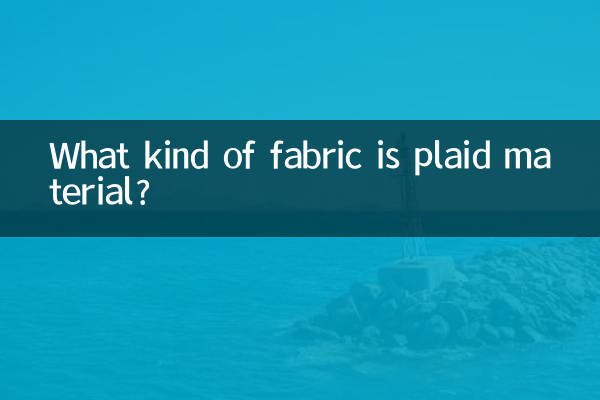What kind of fabric is plaid material?
In recent years, plaid materials have once again set off a craze in the fashion industry, becoming a favorite among designers and consumers. Whether it’s a shirt, dress or jacket, plaid elements always bring a unique charm that coexists with retro and fashion. So, what exactly is plaid fabric? What are its characteristics and classifications? This article will give you detailed answers.
1. Definition of grid material

Plaid fabric is a fabric in which warp and weft yarns are interwoven to form a checkered pattern. It is characterized by regular patterns and contrasting colors, and is often used to make shirts, skirts, suits and other clothing. There are many types of plaid materials, and different weaving methods and color combinations can present different styles.
2. Classification of grid materials
According to different materials and weaving methods, plaid materials can be divided into the following categories:
| type | Material | Features | Common uses |
|---|---|---|---|
| Cotton plaid material | Pure cotton or cotton blend | Good breathability and high comfort | shirts, dresses |
| wool plaid material | Pure wool or wool blend | Strong warmth retention and thick texture | suits, coats |
| polyester plaid material | Polyester or polyester blend | Wear-resistant and easy to care for | Jacket, pants |
| Silk plaid material | Silk or silk blend | Strong gloss and smooth feel | Dress, scarf |
3. The popular trend of plaid materials
According to the analysis of hot topics and hot content on the entire Internet in the past 10 days, the popular trends of plaid materials in 2023 are mainly concentrated in the following aspects:
1.retro trend: Classic black and white grid, red and black grid and other retro patterns have returned again and become the first choice of fashionistas.
2.Color diversity: In addition to traditional tones, bright colorful plaids are also popular, especially for spring and summer clothing.
3.Mix and match styles: The mixed design of plaid material and other materials (such as leather, lace) shows a unique sense of layering.
4. Advantages and Disadvantages of Lattice Materials
| advantage | shortcoming |
|---|---|
| Classic patterns that won’t go out of style easily | Some materials wrinkle easily |
| Wide range of application and strong matchability | Brightly colored plaids may fade |
| Various materials to meet different needs | Some plaid materials are more expensive |
5. How to choose plaid materials
1.Look at the material: Choose the appropriate fabric according to the season and use, such as cotton in summer and wool in winter.
2.look at color: Choose a plaid color that matches your skin tone and avoid too fancy patterns.
3.Look at the workmanship: Check whether the grid is aligned and whether the thread ends are neat to ensure the quality of the fabric.
6. Maintenance methods of grid material
1.washing: Cotton and polyester plaid materials are machine washable, wool and silk are recommended to be hand washed or dry cleaned.
2.dry: Avoid exposure to sunlight to prevent fading.
3.Storage: Fold for storage to avoid deformation caused by hanging.
Conclusion
As a classic fabric, plaid has always occupied a place in the fashion industry with its unique patterns and diverse materials. Whether it's for everyday wear or a special occasion, plaid can add a chic touch to your look. I hope this article can help you better understand plaid materials and make more informed choices when purchasing and matching them.

check the details

check the details